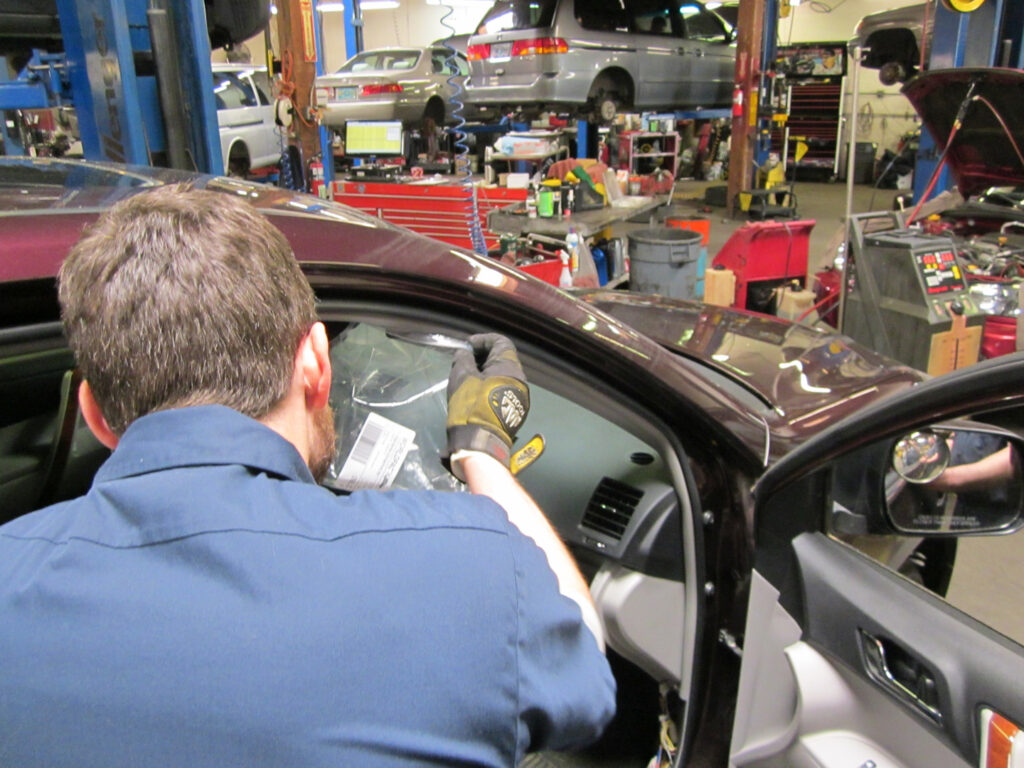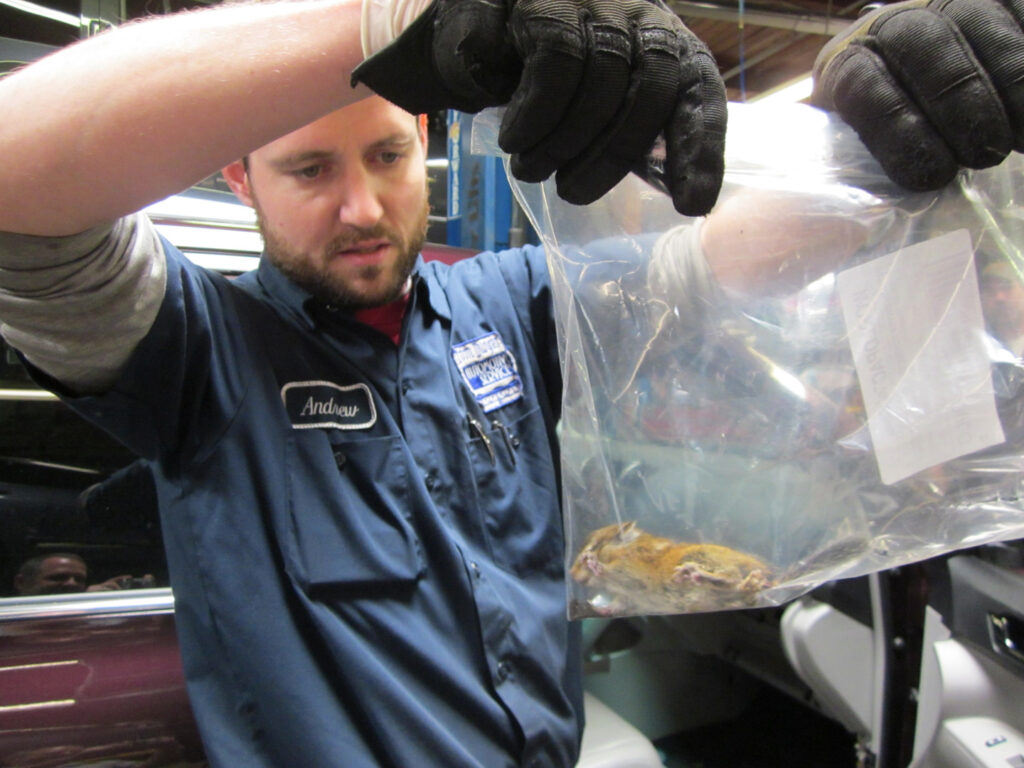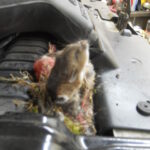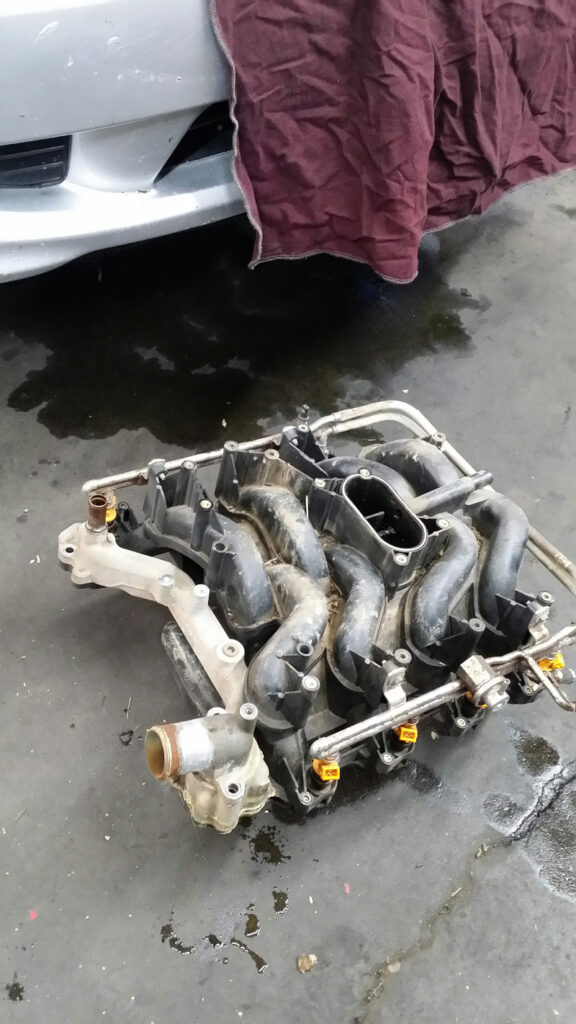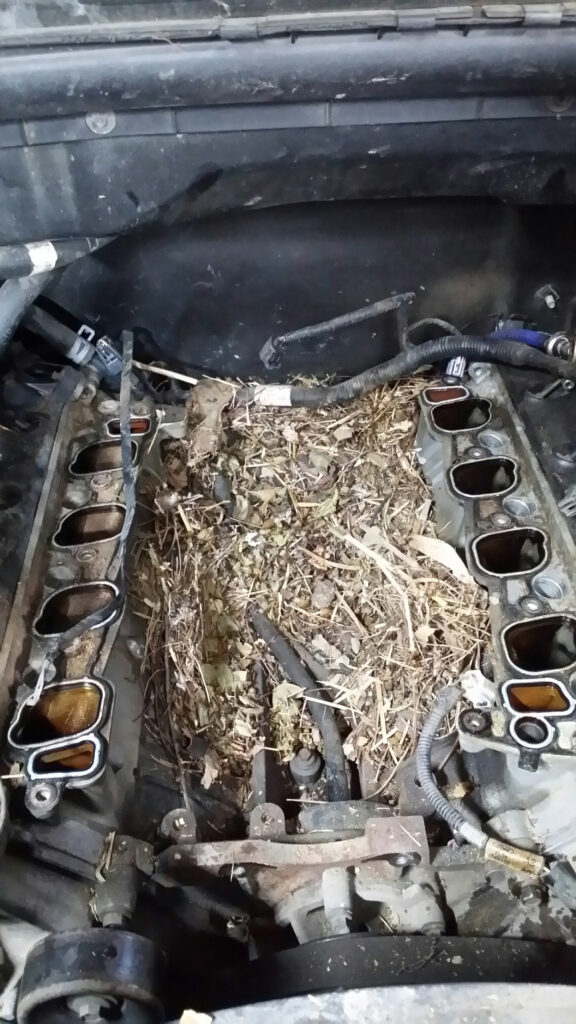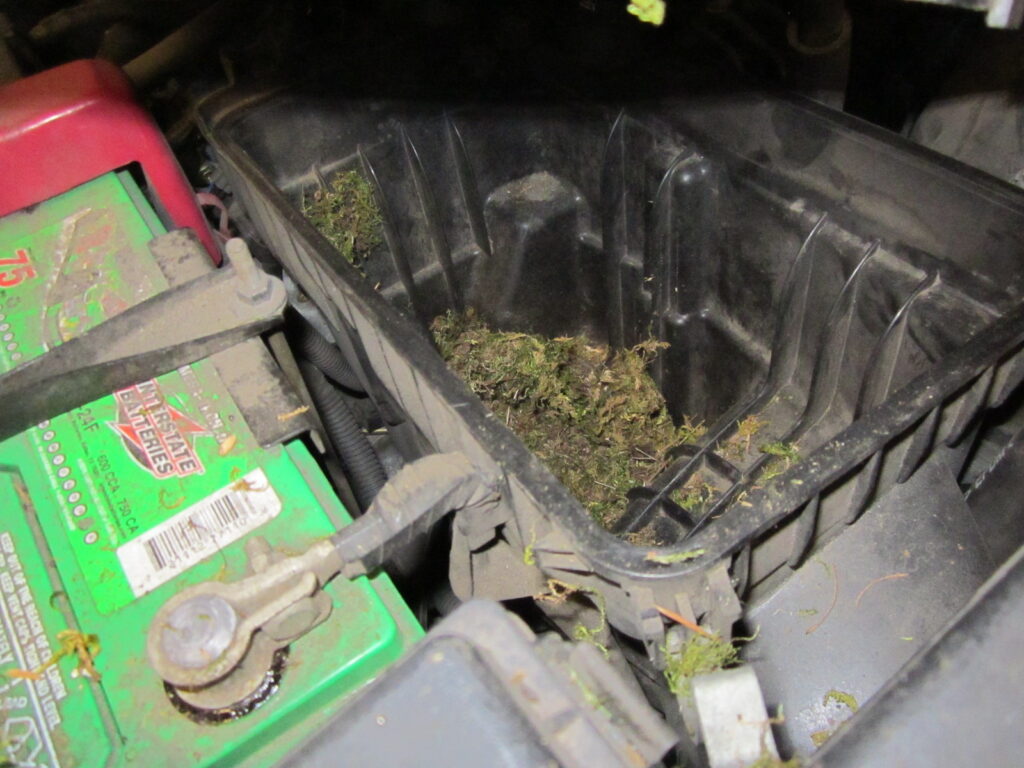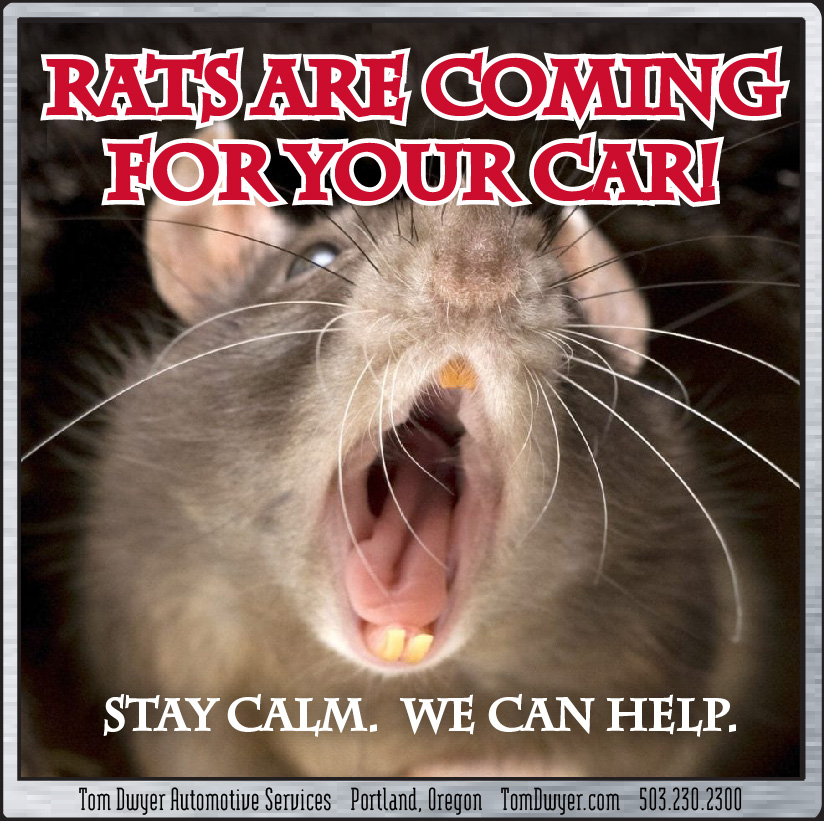 It looks like fully vaccinated people can start returning to approximate normality but we’re not at the end yet, and in the meantime everyone’s still hunkered down in Covid World. It’s not just people though, it’s our vehicles too. We’ve written a little about what your vehicle needs when it’s not getting on the road enough, but there’s something we missed. Our shop manager pointed out that there was a serious risk we hadn’t addressed… rats and mice in your vehicles. We’re filling that gap with this article, and guess what? There’s pictures. Lots and lots of pictures…
It looks like fully vaccinated people can start returning to approximate normality but we’re not at the end yet, and in the meantime everyone’s still hunkered down in Covid World. It’s not just people though, it’s our vehicles too. We’ve written a little about what your vehicle needs when it’s not getting on the road enough, but there’s something we missed. Our shop manager pointed out that there was a serious risk we hadn’t addressed… rats and mice in your vehicles. We’re filling that gap with this article, and guess what? There’s pictures. Lots and lots of pictures…
If you’re a rat your dream home is something dry, warm, and safe from predators. Unfortunately, that also describes your car. We occasionally find rats, mice, chipmunks, and other little furry creatures that have made a bad choice in real estate and paid for it with their lives. Since most folks’ vehicles have been sitting idle long enough to provide attractive homes for rats and mice, we’ve been seeing a lot more of these vehicles. The rodents may set up housekeeping in your trunk, body panels, or even the engine compartment or HVAC systems. One way to tell if you have a rodent issue is a strong urine odor when running the air conditioning or heat; it will be stronger if you’re running the heat. Also, if you smell a strong odor at the front of the vehicle after a long drive, there may be a nest under hood. (To confirm, pop the hood and check for droppings on the engine cover or other components.
Rodents aren’t just ‘icky’, they can transmit a range of diseases like hantavirus, leptospirosis, choriomeningitis, and other nasty things we can’t pronounce. These can create serious health issues for both you and our Technicians. Some rodent invasions are easy to fix; if a mouse has built a den in the trash in your trunk it’s easy enough to just take it out. Other places can be very difficult or expensive to fix. If rodents get into your body panels (like doors or support pillars) they can die and rot, they’re expensive to remove, and the smell might never come out. If they gnawed on your engine wiring and/or fluid lines, we’ll have to track down the damage before doing repairs, which are again expensive. Possibly the worst-case scenario is if a mouse gets into your heater box. This warm, dry, mostly-empty box lives next to the firewall of your vehicle, and requires us to remove the entire dash assembly to get to it. Parts for a fix like
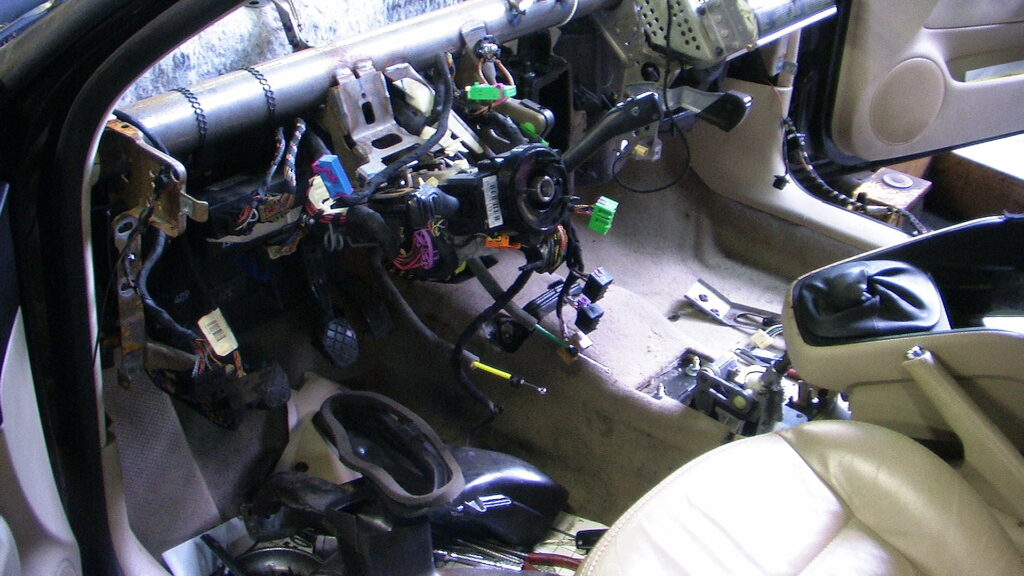
Other rodents can be harder to extract. Here’s what we had to do to get to the mouse in a VW heater box.
this are cheap, but it can take a full day of labor time to remove and another full day to replace. This is very expensive, and sometimes ‘economically totals’ the vehicle.
As with most problems, the best way to solve them is to avoid them if you can. If rats want to use your car as a home it’s up to you to make the neighborhood as inhospitable as possible.
- Driving your vehicle often (at least once a week) can discourage rodents from moving in, and it’s not bad for your vehicle either.
- Smells and tastes can deter rodents, so try soaking cotton balls in mint and dabbing it under the hood. If you choose this option you’ll have to repeat frequently to keep it fresh. Rodents use your tires as a bridge from the floor to your vehicle, so putting mint oil where the tire meets the floor can be helpful too. This would have to be done again every time the vehicle is parked, so it’s not a good solution if you drive it every day.
- Rodent deterrent tape (tape infused with capsicum) can be wrapped around wiring or hoses to discourage little nibblers. We put this on after rodent repairs as a deterrent to prevent further issues. It’s not perfect, though, we have seen some rodents that don’t mind spicy food.
- Poison is another option, but it can be messy, and if the rodent dies in the vehicle it will definitely cause an odor/health issue.
- Don’t leave food sources in or near vehicle. Clean out the fast food bags with food scraps from behind the seat. Dog or cat dishes left in the garage can attract rodents to the area and we often find pet food with rodent nests in vehicles. Even bird seed thrown out on the ground can attract rodents to the area, so use a bird feeder. If you do store pet food in the garage then keep it in a sealed container or container with a heavy lid.
- Of course glue, electric, snap, or even live traps around the vehicle are another option.
- If nothing else works, you can always install a good organic rodent termination system (A cat).
That’s really all there is to say about rats in your vehicle… keep them out if you can, and we can fix it for you if you can’t. But just for fun, we have a couple more pictures and stories from when animals and vehicles clash…
If you go looking for a rodent in your vehicle, don’t expect to find Mickey Mouse cozily waiting in his den. They’re usually dead when you find them and they’ve usually been that way for quite a while…
Though dead and dying rodents cause problems of their own, their nests can be the real problem. The fairly elaborate rat nest in the manifold in the pictures (left and middle) come from a vehicle that sat unused for years before the client decided to dust it off. The other nest (right) was in an air filter housing, but it didn’t take long to build at all.
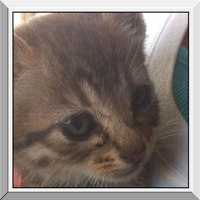 Rodents aren’t the only wee beasties who like your vehicle… find out what happened to an adorable fluffy kitten that decided to take a 1000-mile trip… INSIDE a car’s engine. (Spoiler Alert: the story has a happy ending.)
Rodents aren’t the only wee beasties who like your vehicle… find out what happened to an adorable fluffy kitten that decided to take a 1000-mile trip… INSIDE a car’s engine. (Spoiler Alert: the story has a happy ending.)
And we’ll close with a life-and-death story of animals in engines right here at the shop…
Animal rescue really hit home recently when we were faced with saving the life of an endangered chipmunk. Chipmunks aren’t endangered, you say? This one was. From the moment the Toyota Highlander slid into Andrew’s stall he knew he was facing a unique problem. The owners had seen evidence of rodents partying in their vehicle, but when they tried to break it up the rodents scattered like… well, like mice. Most got out but one took a bad turn and got stuck in the windshield pillar, nestled against the side curtain air bag. After waiting unsuccessfully for him to leave, the owners brought the Highlander in to us before the squeaking stopped. Getting Chippy out was no problem, but getting him out alive? The clock was ticking. Andrew loosened the cowling and gently prodded the very dazed chipmunk into an ASPCA-approved transparent polymeric small-animal transfer container. The whole Dwyer team helped transport the chipmunk to his new home in the blackberry bushes lining the Springwater Corridor behind our shop. As Andrew opened the transfer container and our staff sang “Born Free”, the chipmunk staggered out into the world, somewhat the worse for wear but ready to start his new life.
